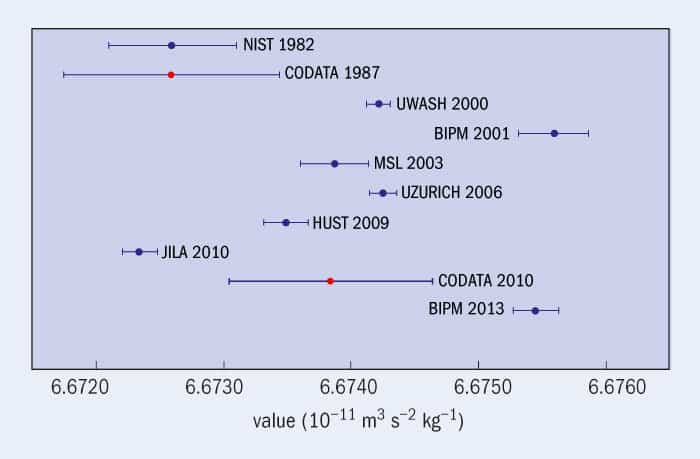Quinn does not talk about being able to measure gravity.
Actually, he does. Maybe you should read the article:
https://www.scientificamerican.com/article/puzzling-measurement-of-big-g-gravitational-constant-ignites-debate-slide-show/" In fact, the discrepancy is such a problem that Quinn is organizing a meeting in February at the Royal Society in London to come up with a game plan for resolving the impasse. The meeting’s title—“The Newtonian constant of gravitation, a constant too difficult to measure?”—reveals the general consternation. "
He clearly thinks it's too difficult to measure, going hand-in-hand with his statement that "We should be able to measure gravity."
Also to give you an example which is more analogous to the discussion on what Quinn says, can you measure your height in micrometers (μm)? If not, does this mean that you do not exist?
This is nothing like measuring a person's height to increasing precision. In your example you have multiple measurements getting the bulk of the same 5 foot 8 inches (or whatever the person's main height is) in each attempt.
In this case the the the measurements do not often do not overlap and are spread out across a range of over ten times the estimated uncertainties. It's clearly measuring something else that is not gravity in that range. The results are being polluted by something that is not gravity.
There is a graphic here:
https://physicsworld.com/a/the-lure-of-g/

Low precision alone is enough to keep a metrologist up all night. But in recent years, a much more serious problem has arisen: measurements of big G are in wild disagreement with one another (figure 1). Since the turn of this century, values recorded by some of the best labs in the world have been spread apart by more than 10 times their estimated uncertainties. Something is amiss – yet no-one is quite sure what. “You go over it, and over it, and over it,” says Speake. “And there comes a time when you say, I just can’t think of anything we’ve done wrong.”
As stated, the results are in "wild disagreement" with each other.
If the results can be polluted by other non-gravitational effects, then they can also be created by non-gravitational effects. They just don't know what they are measuring, as stated by Quinn above.
They are trying to measure the force equivalent of the weight of a few cells. The more appropriate analogy is the one given by the astrophysicist earlier; of trying to measure the weight of a feather on a crude pair of scales outside in a slight breeze. There are effects dominating the experiment and disrupting the measurement, giving a wild result and dwarfing the thing they are trying to measure.